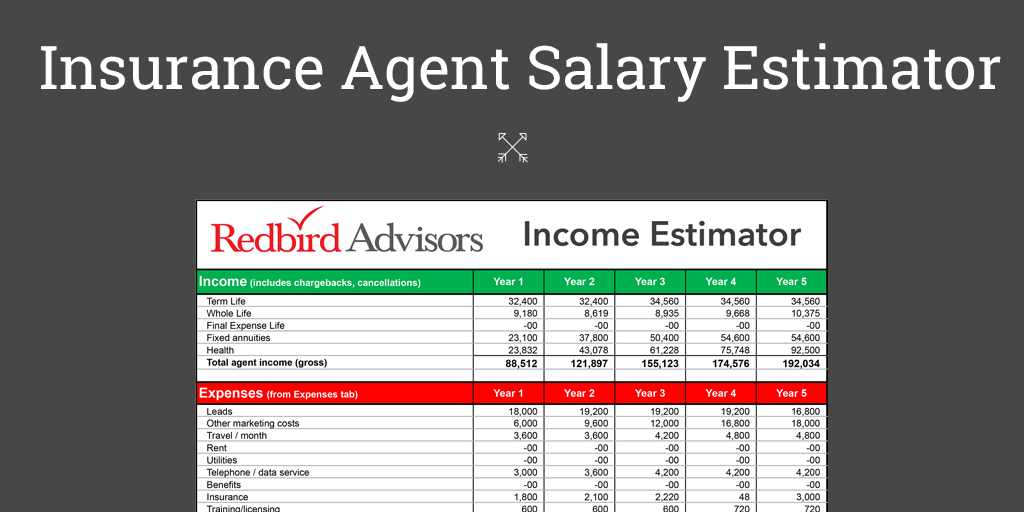Value based healthcare is a topic every health insurance agent should fully understand and explain to their clients, and here’s why.
For the past several years, the debate over how to best deliver healthcare has raged among government officials, providers, the media and the general public. As the baby-boomer population grows older, discussions of how to effectively deal with this challenge have only intensified. Costs continue to escalate, taking a larger bite out of the nation’s economy and forcing many experts to examine ways to find a better system that will be sustainable for decades to come. Under current laws, national healthcare expenditures are projected to grow at 5.5% annually over the next ten years and reach $5.7 trillion by 2026.
Using the current fee-for-service model, healthcare providers have focused on providing good care by administering a shotgun approach to care that puts the emphasis on a quantity of tests, procedures and services so that a patient is blanketed with care. Unfortunately, patients are often subjected to tests and procedures they don’t need, and the system has become more burdened that ever due to the extraordinarily high costs associated with providing excessive care instead of focusing on a high quality of medically necessary care in treating patients.
But in response to spiraling costs, declining patient satisfaction and a growing need to reform a system that is less than efficient, a relatively new alternative to the current fee-for-service model has started to take hold in the United States, and to varying degree, throughout the world.
Value-based healthcare offers a radical transformation of the way medical services are are starting to be delivered now, and into the future. There are many challenges to overcome, but the promise of value-based healthcare could be a sustainable answer to the challenges facing the current way services are delivered.
What is Value Based Healthcare and How Does It Work?
Value-based healthcare is an agreement put in place that rewards healthcare providers by the results they produce instead of by the quantity of services they provide. Doctors and hospitals are paid by how much they help patients improve their health and reduce the impacts of their chronic diseases.
Providers are rewarded by taking a preventative stance with healthcare instead of a reactive stance. Under the current fee-for-service system, a patient with a chronic condition such as heart disease, cancer or diabetes is managed instead of a focus on healing which is the case under a value-based system. Patients who recover from these illnesses or avoid them due to preventative care in the first place will go to the doctors less frequently, have to pay less for services, have fewer tests and procedures, and will be happier and healthier as a result.
When doctors and hospitals focus on prevention, they spend more time with a patient in the early stages of a health issue, providing the patient with better quality care while placing less of a burden on the system payers in the long-run.
The Benefits of Value Based Healthcare
There are several benefits under a value-based healthcare model, and they extend to all parts of the healthcare system from patients to providers, suppliers, and payers.
Patients spend less money in their efforts to get better
The value-based healthcare model focuses on efficiency in helping patients recover from their illnesses and injuries more quickly. Providers focus less on managing a medical issue and more on attempting to aggressively cure a patient instead. This results in fewer tests, less doctor visits, and fewer prescription medications in both the short- and long-term, resulting in fewer costs for the patient and less of a burden on the financial component of a healthcare payment system.
More emphasis is placed on prevention
One of the key elements of value-based healthcare is that providers are rewarded for keeping patients as healthy as possible, including implementing preventative strategies to avoid illnesses and chronic conditions in the first place.
Integrated delivery of services
When teams of doctors and providers work together, they can combine their collective resources and expertise with critical analytics into a single platform that gives a big picture of a patient’s care, allowing for diverse and collaborative medicine to take place.
Reduced medical errors
When a collaborative approach is implemented, less money is spent dealing with medical errors or prescribing ineffective or harmful treatments. When this happens, the possibility of medical malpractice lawsuits can be reduced as well.
Better efficiency means happier patients
When doctors and hospitals focus on prevention-based strategies and less time on chronic disease management, patients are less impacted by health issues, resulting in greater patient satisfaction.
Payer’s costs are better controlled
With an emphasis on prevention and fewer visits, payer’s costs are reduced, lessening the impacts on their premium pools and investments. This reduces exposure and risk, meaning payers are more financially healthy as well.
Healthcare providers are seen in a more positive light
When products and services are matched to a more positive outcome, the public will view providers in a more positive way, especially when providers can tout lower overall costs to patients as part of their sales and outreach strategies.
Society will become healthier overall and spend less money doing so
Healthcare accounted for about 18% of the United States Gross Domestic Product, accounting for $3.3 trillion, or more than $10,000 per person in 2016. Better managing chronic conditions and reducing the amount of money spent on healthcare not only makes for a healthier population, it allows money to be used for other things across a broad spectrum.
Value-based healthcare is the only way to make healthcare sustainable
The current system no longer works, and for healthcare to remain viable and provide quality care, the move to value-based healthcare remains the best option for sustainability.
The Challenges of Value-Based Healthcare
While there are several benefits to value based healthcare, transitioning to this type of system does have challenges associated with it.
Gaining consensus
In some cases, some providers may be apathetic or do not want to disturb a system that is in place and putting lots of money in their pockets. In other words, healthcare providers don’t get paid at all when patients stay well, which is the goal of value-based care. In other instances, deciding which healthcare provider is responsible for which part of a patient’s treatment could prove problematic, creating questions about who should receive payment and who should be held accountable. There are also consensus issues when it comes to trying to decide what costs of services should be among various providers when there might be a variance in structural costs based on each individual provider.
Tough to implement
Due to the massive size of healthcare systems in the United States and throughout the world, the sheer size of switching over to a value-based healthcare system will require massive amounts of time, effort and financial backing. The other issue involves trying to implement polices at a macro level, setting standards that all parts of the system can agree on, as well as what kind of timeline will be acceptable. Perhaps one of the biggest challenges is trying to connect a fragmented healthcare delivery system through the creation of an electronic infrastructure that makes it easy for teams of healthcare providers to easily share information on individual patients. This can be done incrementally with certain smaller sub-populations but doing it on a wide scale basis could create many challenging technical problems.
Financial considerations
Transitioning over will cost more in the short-term, and certain providers will see an impact to their bottom line because they will not be able to bill payers as they have in the past. In the long-run, providers will see more patients and be paid based on the results they produce, with the idea that eventually they will be on sounder fiscal footing because the entire system will be on sounder fiscal footing. Bundling billing and payments will also require implementing new financial systems as well.
Creating an adequate measurement system for patient outcomes
Determining baseline conditions and levels of improvement could be open for debate and cause disagreements among providers and payers.
A lack of experience in evidence-based outcomes and quality measures
Hospital systems and doctors are well entrenched in the fee-for-service model which guarantees they will make money. But under value-based healthcare, providers must take risks that are based on a different set of criteria revolving around prevention, evidence-based outcomes and the use of quality measures as a means of getting paid. Providers do not have strong backgrounds in these areas and it creates reluctance on their part to implement the new system.
A Global Snapshot of Value Based Healthcare
As countries throughout Europe, Asia and the balance of the world continue to wrestle with the problems associated with fee-for-service based healthcare, many are moving toward value-based healthcare at varying degrees of implementation. Here’s a look at how some countries are making the transformation.
Value-Based Healthcare in the United Kingdom
Through the National Health Service, the United Kingdom offers universal healthcare to its citizens. Some citizens also purchase supplementary coverage for certain elective procedures. The UK’s technology system is dated, but the government is committed to upgrading it and is embracing value-based healthcare with a program known as RightCare.
The nation is working on an accelerated roll out to all local health providers and is focused on achieving a smooth integration to value-based care. The RightCare program is focused on using data and evidence to highlight variations and identify the greatest areas to support quality improvement. The program is also concentrating on innovative solutions by testing new concepts and attempting to influence future policy decisions. RightCare is also working to actively support local health economies in a way that creates sustainable change that improves patient’s health and increases value by leading implementation of RightCare with all of the country’s 209 local health providers.
Value-Based Healthcare in Australia
Australia provides citizens with universal coverage and enjoys relatively low costs and good patient outcomes. The biggest challenge the country faces is that payments are administered at the federal level, but states are responsible for the delivery of services. Citizens also have private or public options when it comes to choosing healthcare, making for a more efficient system and greater choice, but that also provides a barrier to implementing value-based healthcare. Rising costs have led to the government conducting some trials of value-based care delivery systems, but to date, there has been no widespread acceptance or implementation of value-based care.
While rising costs continue to grow in importance at a federal level, many stakeholders are resisting any changes. The one area where there is some implementation progress is in the management of chronic diseases. Several pilot projects are underway, and many disease registries have been created, but there is still a problem with a lack of sharing information across platforms. However, the major focus on healthcare remains costs instead of providing better value, and as a result, Australia has not many true inroads in embracing value-based care.
Value Based Healthcare in Canada
The Canada Health Act of 1984 implemented universal healthcare coverage for all Canadians who receive coverage through Medicare. Each province is responsible for delivering care to their resident citizens. About two-thirds of the population also has private medical health insurance coverage in place as well. Provinces must monitor the quality of care themselves and provide input to the government on which drugs, tests and treatments should be funded as well as what strategies should be implemented regarding public health issues.
Although there is no formal national policy, many provinces have moved away from fee-for-services payment systems. Provinces are implementing various quality control measures, creating annual public quality improvement plans, conducting patient satisfaction surveys, staff surveys, and linking many executive’s pay to hospital performance. But there are only minimal efforts underway to provide information on how to implement value-based healthcare. Each province is still responsible for implementing its own electronic records strategy, but there is a long-term goal of attempting to provide access across all platforms among medical providers.
Value Based Healthcare in India
India continues to face fundamental healthcare challenges because about 80% of its population lacks access to basic healthcare. Healthcare infrastructure in rural areas is a major problem and the government has not been able to meet the challenge of providing services in any form. However, in urban areas, there is a much different story with high quality care available at numerous world-class facilities.
Through India’s national Rural Health Mission, the country is attempting to bring affordable healthcare to more people while also working toward improving quality as well. There is an effort to evaluate current delivery systems and develop new methods for better efficiency which is part of a broader move to value-based care. A Draft National Health Policy is currently being developed with the goal of “higher health outcomes at lower per capita total health expenditure” so there is some movement toward value-based healthcare.
Value Based Healthcare in Japan
Japan’s current healthcare system was established in 1961 and has been a fee-based system since that time. Workers subscribe to systems managed by the Health Insurance Society and by the Japan Health Insurance Association which diversifies risk using subscriptions from workers in small and medium sized companies. In the early 2000s, due to growing concerns over rising healthcare costs and an aging population, the government introduced the Diagnosis Procedure Combination payment system. Hospital administrators and healthcare providers can now access a database of treatment information so that they can better understand and improve the quality of care they deliver.
To strengthen the nation’s healthcare system, in 2015 the government published a strategic vision plan of healthcare polices through 2035 that advocated maximizing existing systems and implementing value-based improvements into the nation’s healthcare system. The infrastructure needed to transition to value-based healthcare is still being developed but several pilot projects are underway, including the development of healthcare technology infrastructure, which is one of the keys to a successful implementation of value-based care. The government has also developed standards regarding the sharing of medical information and offers subsidies to providers who implement electronic-based record systems.
Value Based Healthcare in Spain
Spain provides universal healthcare through a tax-funded national healthcare service called Sistema Nacional de Salud. There are 17 independent regions in the country that play a major role in the delivery of services. Spending for healthcare costs are high, creating questions about efficiency, a lack of quality metrics and inadequate assessments of patient outcomes.
A few regions are exploring value-based healthcare, but a decentralized system and governance structure means that some foundations are in place, but overall the nation is a long way from creating an effective value-based healthcare system. While there is interest from all stakeholders, the central government’s lack of leadership means that creating a national policy has not come to fruition.
Value Based Healthcare in the United States
Close to 90% of all citizens in the United States are covered by healthcare insurance and efforts are progressing slowly but surely to move away from fee-for-service based healthcare. On the federal level, the government is moving away from fee-based care for Medicare. Private insurers are state governments are also moving away from fee-based care for Medicaid as well by establishing accountable care organizations and managed care organizations. In these instances, states are contracting with private insurers to run these types of operations.
The Centers of Medicare and Medicaid Services currently has several value-based programs that have either been implemented or will be implemented in the near future. They include:
- End-Stage Renal Disease Quality Incentive Program (ESRD QIP)
- Hospital Value-Based Purchasing(HVBP) Program
- Hospital Readmission Reduction(HRR) Program
- Value Modifier (VM) Program (also called the Physician Value-Based Modifier or PVBM)
- Hospital Acquired Conditions(HAC) Program
- Skilled Nursing Facility Value-Based Program(SNFVBP)
- Home Health Value Based Program (HHVBP)
Despite these advancements, healthcare professionals have not yet fully embraced value-based healthcare, although it is slowly being introduced by some professional organizations such as the American College of Physicians and the American Medical Association.
However, advancements are being made in the U.S. through efforts to create more comprehensive disease registries, broader use of electronic health records and more examples of value-based pricing in the delivery of services. Unfortunately, one large barrier faced in implementing value-based care is that the current health IT system is extremely fragmented, making it difficult to share records among healthcare professionals.
Conclusion
Now that you have an idea of what value-based healthcare is, what do you do next?
Understanding the power of value-based healthcare and being able to explain it to your clients will set you apart from the other agents in the field.
It will show your clients you’re up to date with the industry and most importantly you’re keeping their best interest in mind.
Stats continue to show the strength of value based care and when you’re selling a health plan that is structured on a value based model, it’s not a piece of information you want to leave out during your presentation.
Always share this information with your clients, they will appreciate it. 🙂
A great way to do that is by sharing a recent article from Forbes with your clients. Use the link below.



